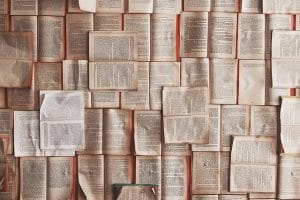

Contents
What is the specific difference between selective laser sintering and fused deposition modeling (FDM process)?
The SLS and FDM processes are currently the most commonly used 3D printing processes. A comparison of these two key technologies of rapid prototyping is all the more worthwhile.
while at Selective laser sinteringSLS 3D printing with PA plastics, physical 3D models are created by locally fusing individual layers of powder, the FDM 3D printing process is based on the fact that the 3D printed object is produced layer by layer using a CAD data model a liquid ABS plastic is applied from top to bottom.
Each of these two methods and materials result in their own specific properties and areas of application, which are presented below.
wall thickness and support material
Since wall thicknesses of 0.6 mm and degrees of detail of 0.25 mm are possible in the SLS 3D printing process (compared to 1 mm and 0.25 mm in the ABS/FDM process), this 3D printing process is particularly suitable for very filigree components, which thanks to become possible with this technology. On the other hand, this is recommended for long and thin, flat 3D printed objects FDM 3D printing process, since the thermal distortion is much lower here. As a rule, the FDM process is built with a layer thickness of 0.25mm, while the SLS process is between 0.1 – 0.15mm. The fewer layers, the higher the printing speed.
Another important advantage of the SLS 3D printing technology is the much less complicated removal of the support material (often necessary in the 3D printing process) with this 3D printing process. In SLS 3D printing, the support material consists of powder residue that can be easily removed and even reused by simply blowing it out or shaking it. With the FDM process, solid support material remains, which makes it necessary to post-treat the 3D printed model with caustic soda and thus dissolves.
While it is difficult to 3D print models of high complexity using the FDM 3D process, this technology enables faster and cheaper 3D prints of good quality with low to medium complexity. With the professionalism of designs However, selective laser sintering also performs better in these areas.
 Sketch of the SLS process
Sketch of the SLS processMulticolored print 3D models in the FDM process possible
Thanks to several extruders built into the 3D printer, even multicolored 3D models can be printed using the FDM process. The SLS 3D printing process cannot keep up here, since the PA powder required for the 3D printing process is monochromatic, usually white. After all, SLS 3D print objects can be colored by post-treatment (i.e. after the 3D printing process). On the basis of PA Black 3D Activation also enables you to print SLS 3D models that are completely black.


A characteristic of SLS 3D printed objects is their lightness rough surface structure, which, however, can be easily smoothed out using various post-treatment options (such as painting or vibratory grinding). Overall, however, the surfaces of SLS print objects are usually a little smoother than in fused deposition modeling. Selective laser sintering also leaves behind less clearly visible ones print layers (layers) than FDM 3D printing.
An important difference between SLS and FDM 3D printing is that most home 3D printers use FDM processes. While SLS 3D printing is mainly in industrial plants is used. This is due to the fact that 3D printing in fused deposition modeling is easier to handle for private users. However, consumer 3D printers can hardly achieve the quality and ease of use of professional 3D printing systems, even in the FDM area.
 The FDM process outlined
The FDM process outlinedFDM process cheaper in small runs
In general, in addition to the differences already mentioned, FDM 3D printing is cheaper for 3D printer users who print in smaller quantities. While selective laser sintering usually only pays off in larger runs.
Typical areas of application for SLS/PA 3D prints are art and design as well as the production of injection molds in toolmaking. ABS/FDM 3D printing technology is primarily used for functional and product samples, but also in the areas of architecture and medicine.
3D Activation helps you to realize your 3D printing idea. Whether in the FDM process, in the SLS and other 3D printing processes, such as the Polyjet process. You can find more information about 3D printing technologies and materials on our homepage.
To contact form


